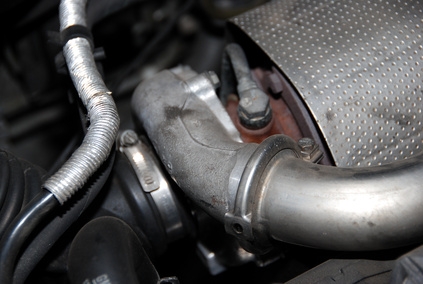
Traditional turbochargers mount to the engine's exhaust manifold, under the hood. As many engine bays are cramped, adding an aftermarket traditionally mounted turbocharger to a vehicle can be difficult, sometimes requiring modified hoods and other engine components. Rear-mount turbos avoid this issue of space by mounting further down the exhaust, underneath the vehicle. There are advantages to each system of turbo mounting.
Turbochargers pressurize the intake air to create horsepower, and create a lot of heat in doing so. The heat from a traditional turbo is trapped under the hood, which sometimes creates overheating. A rear-mount turbo setup has the advantage of being mounted at the rear underside of the vehicle, where its heat can easily dissipate.
As a rear-mount turbo requires a much longer intake piping system than a traditionally mounted turbo, there is increased turbo lag and pressure drop. A traditionally mounted turbo has the advantage of pressurizing a smaller volume of piping, thus offering quicker response and more efficient pressurization.
To run most efficiently, turbo-heated air needs to be circulated through an intercooler system before entering the engine. As rear-mount turbos' piping is long and in the ambient air of the vehicle's underside, an intercooler system is not necessary, for the charged air is cooled enough by the time it reaches the intake manifold. Again, the downside of this setup is turbo lag, as the air takes much longer to reach the throttle body from a rear-mounted turbocharger.
Turbochargers require oil for lubrication and/or coolant. Traditionally mounted turbos have the benefit of being bolted directly to the engine, thus allowing easy access to engine oil. Rear-mount turbos require a more extensive system of oil and coolant lining.